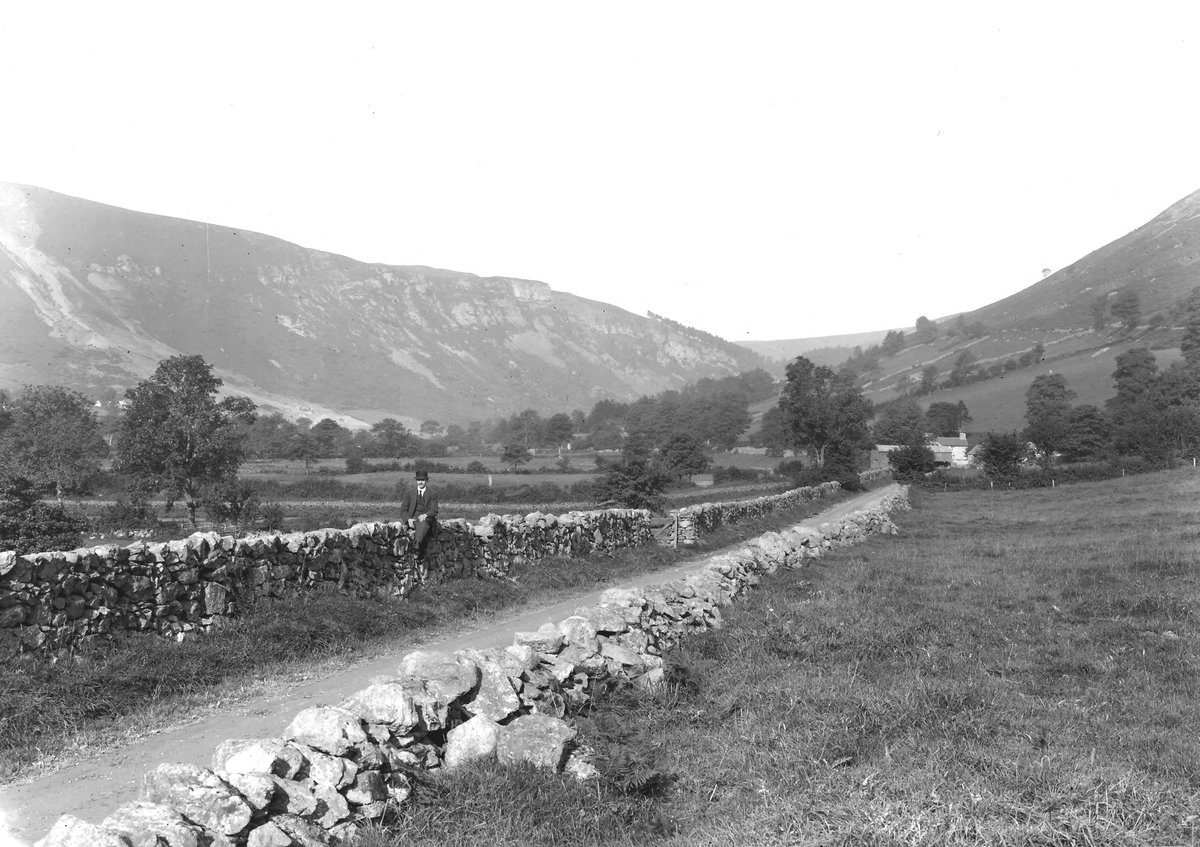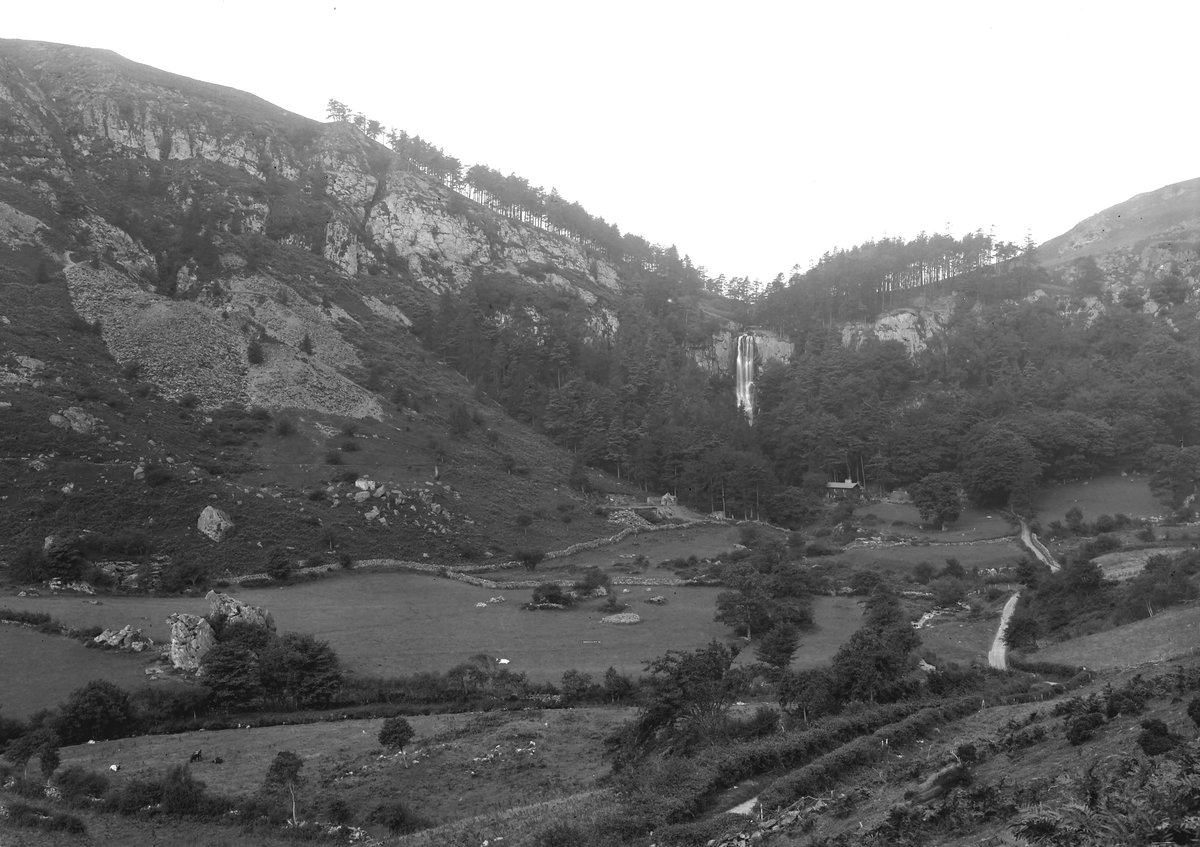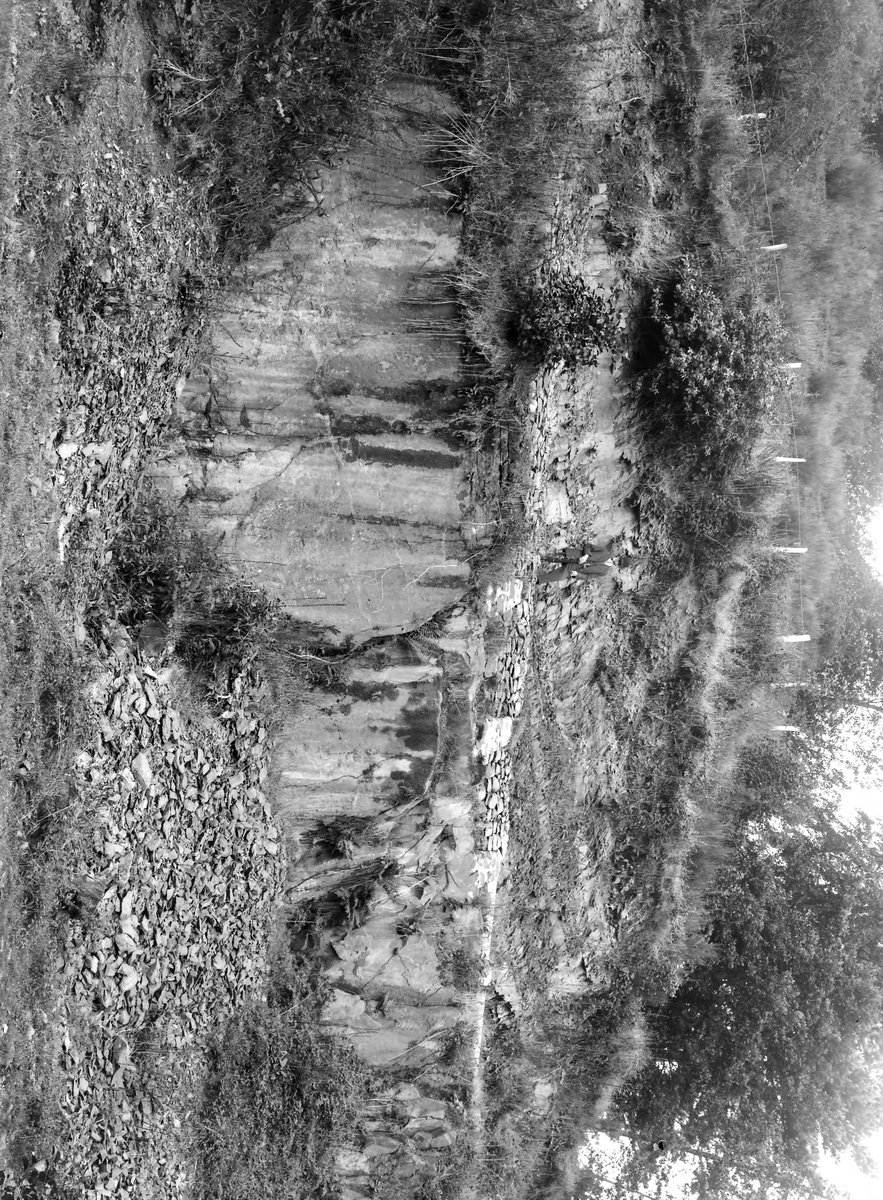The site is located within Ordovician Llangynog Formation shales, slates, and tuffs, with two ENE-WSW veins and two E-W veins containing galena and sphalerite in a matrix of calcite, quartz, and barytes. Extensive mining remains include hushing earthworks, semi-circular dams, leats, and open stopes. The opencast workings have left a significant debris fan extending to the dressing floors. Transport infrastructure included a tramway from No.1 level to the opencast and a steep incline leading to the dressing floors, with evidence of an ore chute from 1885. A reservoir and multiple leats, fed by local streams, supplied water power, including a 30x4 ft waterwheel for crushing machinery. Processing remains include a crusher house, stone breaker, wheelpit, and possible ore bins. Other features include a magazine, possible mine office or smithy, workshops, stables, and miners’ cottages. Foundations of an 18th-century building remain at the western end of the opencast, while another rectangular structure nearby may have had agricultural origins.
| Year | Activity |
|---|---|
| 1751 | Martin O’ Connor is told that a large quantity of ore had formerly been raised, although nothing about 100 tons in previous six years. He also notes a 20 fm deep shaft north of the main lode, 2 men working the mine and traces of hushing on the hillside. |
| 1789 | Mine active again. |
| 1850 | Mining Company of Wales hold sett. Four level, with No3 driven 60 fm to a 2 foot lode of solid lead ore. |
| 1855 | Bell Williams reports to the company on state of levels and plant at the mine. Mine put up for sale, but probably remains idle. |
| 1870 | Vigourous promotion as East Llangynog, with 2 sockbrokers, J.P. Endean and Joseph Taylor amongst owners. A claim that the lode was worth £100/fathom was refuted by former Llangynog manager James Thomas to whom the claim had been attributed. This fails to dissuade shareholder investing, with one claiming Taylor had made £60,000. |
| 1874 | Company collapses. |
| c8175 | Taylor re-acquires the property for £4,600 and sells it to newly formed Llanrhaiadr Lead Mining Company for £20,000, half in cash, half in shares! |
| 1876 | Work concentrated on Deep adit, with hand pumps allowing sinking to 10 fm. |
| 1880 | Company wound up. |
| c1910 | Operated for a few years. |
943 tons lead ore returned since 1845 mainly by East Llangynog venture.
External Links
Publications (16)
- (1922); BGS - Mineral Resources of GB (c1920s) Vol XXIII - Lead & Zinc: Pre-Carboniferous Shropshire & North Wales; 111 pages
- (1981); WMS Newsletter Issue 04 Dec; 3 pages
- (1988); WMS Newsletter Issue 18 May; 12 pages
- (1998); WMS Newsletter Issue 39 Dec; 8 pages
- (2005); WMS Newsletter Issue 52 Spring; 28 pages
- Bick, D.E. (1991); Old Metal Mines of Mid-Wales, The; West Montgomeryshire, Aberdovey, Dinas Mawddwy & Llangynog - Part 5; pp. 36-38
- Bick, David (1994); PDMHS (Peak District Mines Historical Society) 12-3 Sum - Early Mining Leats and Ponds in Wales; 4 pages (37-40)
- Edited by D. J. Linton (2018); Welsh Mines & Mining - The Fascination that is in all Mining; 93 pages
- Foster-Smith, J. R. (1978); Mines of Montgomeryshire and Radnorshire, The
- Foster-Smith, J.R.; NMRS (1978); British Mining 10 - Mines of Montgomery & Radnorshire; ISBN 0 901450 12 X; pp.4-5
- Hughes, Stephen (1994); PDMHS (Peak District Mines Historical Society) 12-3 Sum - The Hushing Leats at Cwmystwyth, The; 6 pages (48-53)
- Jones, Nigel and Walters, Mark and Frost, Pat (2004); Mountains and Orefields; 208 pages
- Law Journal Reports XXXI (1853); pp 589-591
- Timberlake, S. (2002); Title unknown - Dylife Mine etc
- Williams, R. A. (1985); Old Mines of the Llangynog District, The
- Williams, R.A.; NMRS (1985); British Mining 26 - Old Mines of the Llangynog District, The; ISBN 0901450 27 8; pp.12,16-19,26,30,35,73,75-89,116






